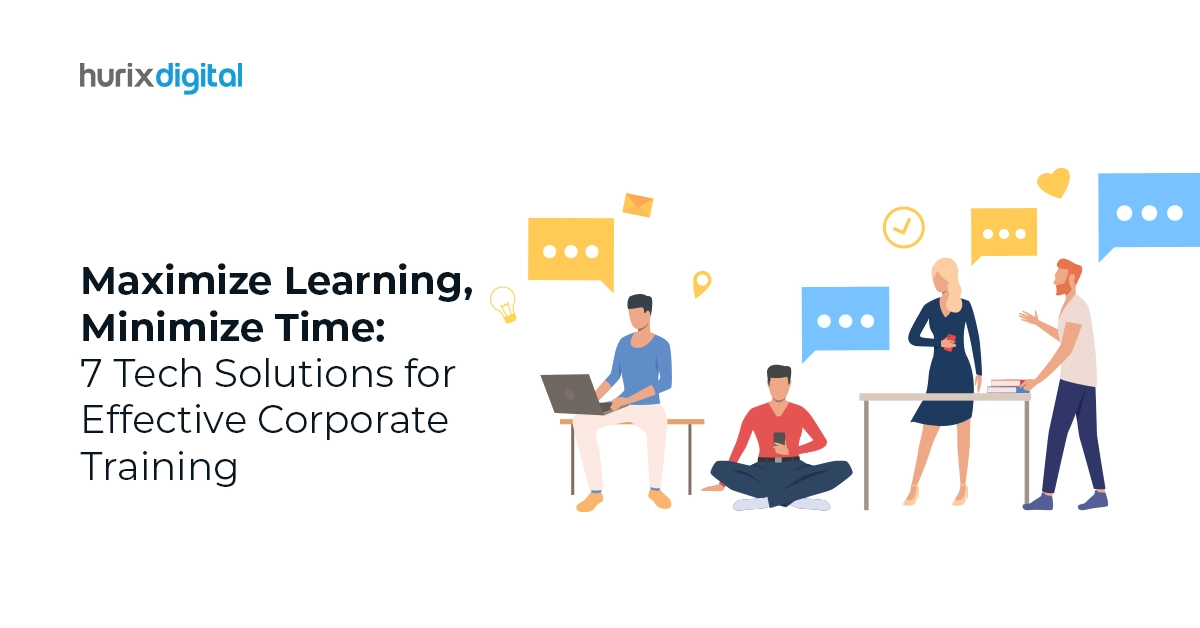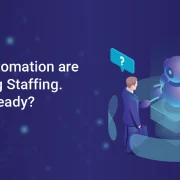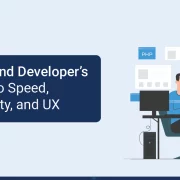
How to Implement Microlearning in Corporate Training
Summary
Discover how to effortlessly incorporate microlearning into your corporate training strategy to boost knowledge retention and productivity through engaging, bite-sized educational content.
Table of Contents:
- Introduction
- 7 Advantages of Implementing Microlearning
- How to Implement Microlearning Into Your Learning and Training Strategy?
- 5 steps to implement microlearning into Your Learning and Training Strategy
- Conclusion
What is Microlearning?
Microlearning is a way of imparting knowledge in small and very specific nuggets or micro bites. Microlearning breaks down content into small digestible bites and each bite is complete in itself, with complete information about a particular concept.
Microlearning is already redefining the educational landscape. As of today, the very concept of a classroom, i.e., learning at a specific time and place, is changing. The role of the educator too is evolving from simply being an agent of information to a facilitator in an individual’s personalized learning journey. In this context, it is safe to say that microlearning is the future of training and learning. Instead of tying learning to a rigid structure, microlearning is ensuring that the content is contextual, real-time, and available for consumption at the time when a learner needs it.
7 Advantages of Implementing Microlearning in Corporate Training:
1. Addressing the Challenges of Limited Attention Span:
Microlearning is based on the 90/20/8 rule, which states that people are more alert during the first 8 minutes of their learning after which their attention begins to wane. After 20 minutes, it undergoes a notable dip, and on reaching the 60-120 minute range, the alertness level slips completely. A microlearning nugget is usually within a 3 to 5 minutes window, which means that learners can effectively understand and retain their learning.
2. Addressing the Challenges of Limited Time Span:
It is generally observed that learners can only put aside 1% of their time for training and development. This builds the case for an organization to provide training information in small bites that are available for consumption anytime, anywhere, and not restricted to physical classrooms.
3. Addressing the Challenges of the Forgetting Curve:
According to the theory of the forgetting curve, learners tend to forget nearly 80% of what they have learned within 30 days if there is no reinforcement to the learning. Microlearning helps to negate the challenge of the forgetting curve as small, concept-specific nuggets can be used to reinforce formal learning for better retention.
4. Addressing Specific Learner Needs:
Microlearning is not just breaking an 8-hour training module into small nuggets to be consumed by learners at their own pace. Each micro bite is designed to address a specific problem or a definite learner need. Each nugget is kept as crisp as possible while ensuring that it adequately covers a specific learning objective and is easily available to the learners just in time. Besides, the microlearning experience is action-oriented, enabling the learners to practice what they are learning in rich media formats.
5. Empowering Learners:
Microlearning empowers learners in the following ways:
- Flexibility: Learners have the flexibility to learn at their own pace on the device of their choice, be it a smartphone or a Besides, they don’t have to log on to their learning management system to access the nugget
- Learner-centric: These micro bites can be embedded in the learning path in a flexible way, which means that they can learn what they want, at their own pace, and on a device of their choice. These bites also address specific learner styles of end-users and so add an element of personalization to the learning
- Just-in-time: Microlearning makes for great performance support tools as the micro nuggets are available to the users when they need the information
- Less Time Consuming: Since these nuggets can be completed quickly, they are more effective and beneficial to the learners
- Facilitating Innovation: Mobile devices are opening new frontiers of knowledge. Rather than depending on educators, learners are now taking it upon themselves to find solutions to their problems. As the learning journey gets more personalized, people will be more motivated to experiment, innovate, address challenges, and suggest strategies for success.
6. Benefitting from Digital Networks:
Mobile technology enables learners to connect on various digital networks, platforms, and content resources, thus connecting learners with learning communities across geographies. Thus, micro-learning opens up new vistas of knowledge-sharing, enabling learners to gain worldwide perspectives.
7. Accessing Real-time Experiences:
Augmented reality is the new buzzword in training and development. AR uses the real environment and superimposes new computer-generated information to create an enhanced version of what one sees, hears, feels, and smells. Mobile technology enables learners to look at an augmented world through their phone cameras and gain a real-world perspective of the subject under study. To illustrate with an example, several e-commerce sites have catalog apps that allow you to use your smartphone to zoom in on the products and view them in a simulated environment.
Also Read: The Ultimate Guide to Corporate Learning Solutions and How They Can Benefit Your Company
How to Implement Microlearning Into Your Learning and Training Strategy:
Microlearning, if properly implemented, can result in improved knowledge retention and reduced cost. Besides, it is compatible with mobile learning, enabling learners to access training while on the move.
Here are 5 Steps to Implement Microlearning into Your Learning and Training strategy:
1. Develop Your Training Goals:
Invest time to first identify and plan the outcomes your company wishes to achieve from its training programs. It is also a good idea to include employees in the brainstorming process as it will give you an idea of the skillsets to be improved. When done right, microlearning will help the employees grow in their careers and create an engaging learning experience through rich media and personalization.
2. Create Lessons Based on Employees’ Learning Styles:
Organizations usually make the mistake of lumping together the same training programs for every employee. However, microlearning is based on the concept of personalized learning. So, it is a good idea to know your employees’ learning styles as this will help you plan your microlearning lessons such that they get the best information. You may wish to survey employees to see how they best learn and what tools are helpful in the process. You can then take a personal approach that best meets your training goals and helps the learners to better understand and employ learning in real-world situations.
3. Evaluate Your Design Options:
Microlearning thrives best with rich media. Creative presentations, use of animations, 3D models, AR/VR features and audio/video files, and assessment features can be used to bring alive the subject, provide learners the opportunity to learn at their own pace, practice concepts in a virtual environment before putting them to test in real situations and assess their grasp of the subject.
4. Make Microlearning Available Anytime, Anywhere:
Once the training is available on mobile devices, learners will no longer see training programs as a distraction from their everyday duties. Away from a restricted schedule, they will take charge of their learning for professional development. They would be able to fill their knowledge gaps, anywhere, and also at the time when they most need access to the knowledge to effectively fulfill their commitments.
5. Evaluate the Goals of Your Microlearning:
As with all other types of learning, make sure you evaluate the outcomes of your microlearning program. Evaluate your employees’ learning outcomes, seek feedback, and accordingly re-evaluate your microlearning to ensure it meets its goals.
Conclusion
A learning management system is a great tool to create accessible microlearning content. Using a suitable LMS, you can create bite-sized lessons, enrich them with rich media formats, add evaluation tools, and ensure that the lessons are accessible anytime, anywhere, thus, giving your employees access to information at the right time and in the right way.
If you are looking for an LMS which meets the above criteria and more, you can consider Hurix Digital Learning Management System with customizable features and support services.







